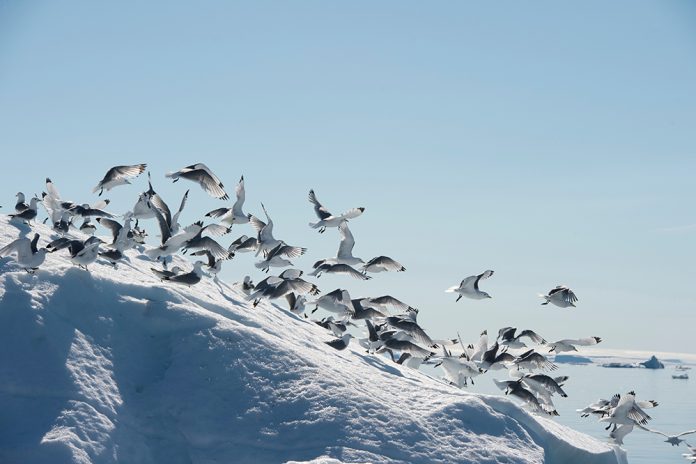Three artificial nests have been commissioned along the East Coast by an offshore energy giant.
The structures were completed by marine construction contractor, Red7Marine, on behalf of Ørsted, Danish specialists in offshore wind. They were required as a part of the Development Consent Order for the Hornsea 3 Offshore Windfarm as an environmental measure for a vulnerable seabird, the Black-legged kittiwake.
Red7Marine managed fabrication and installation of the unique nearshore structures, along with Ørsted and its designers. Two of the artificial nesting structures (ANS) are located approximately 1km from the shoreline of South Beach, Lowestoft, and the third is 1.4 km from the shoreline of the RSPB Minsmere Nature Reserve.
Each structure has around 500 nesting spaces, and is purpose-built, bespoke, and specific to the landscape characteristics of each location. The structures also allow researchers to study the birds.
All structural elements were delivered to the SLP Berth in the Port of Lowestoft where they were bolted together and assembled. Two Red7Marine jack-up barges were used throughout construction, transporting at least two full structures out to the designated sites without resupply.
Designed by a team of ecologists, architects, and engineers, each structure has narrow ledges and vertical sides to replicate the cliffs where kittiwake would naturally nest. There are eight sides to give kittiwake different options in case one side is too sunny or too windy. The main structure is off-white to blend in with the sky and sea.
Seven of the eight vertical side walls are fitted with nesting compartments, and barn doors have been included on the remaining side of the structure for emergency access. The yellow base and the light at the top are essential for safe navigation and have been requested by the local port authority, Trinity House and the Maritime and Coastguard Agency, alongside other safety measures.
The nesting structures will be monitored every year to count the number of birds, occupied nests, and their productivity. In addition, monitoring systems are in place for the existing kittiwake colonies in Northeast England and East Suffolk and the results will all be shared with local wildlife groups.
Kristen Branford, Managing Director at Red7Marine, comments: “We are delighted to announce the successful completion of ‘Project RISSA’ involving the installation of three artificial nesting structures.
“These structures will play a crucial role in supporting an important and vulnerable species, whilst enabling the generation of clean, green electricity for the Hornsea 3 project. This project is the first of its kind and required meticulous planning and consideration, and we are proud to have achieved this significant milestone.
“Our success in delivering this project was greatly attributed to effective supply chain management. With multiple interfaces involved, we recognised the importance of coordination and collaboration to meet project timelines.
“Red7Marine remains committed to pushing boundaries and finding innovative solutions that harmonise renewable energy generation. It was great to work alongside Ørsted on this project and we look forward to continuing work together in the future.”





